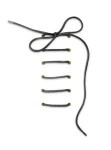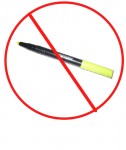Need a new logo? Or illustrations for your web site? Maybe a brochure?
Not sure how to hire a graphic designer? Or what to look for?
You can search on Google or elance for ‘graphic designer’ or ‘logo design” and get a long list of designers anxious to be hired. But are they any good? And do they have the right skills for your job?
Here’s how to sort through all those names and hire the designer who is right for you.
Offline or online skills
Brochures require different skills than web design. Web mistakes are easy to fix. Printing errors are costly and time-consuming. Ask them if they have experience with the type of project you have in mind.
Think about how your design will be used. Web only? Or web and print? Low-resolution images are OK on the web, but will look awful in print. Web colors and print colors are generated differently, so colors will look different in print than they do on the web.
Design style
What sort of “style” do they have? Closer to a cartoon? Or more like a painting? Look for a designer whose portfolio matches the result you have in mind. A designer who specializes in anime might not be a good fit for an insurance company.
Process
How do they work? Do you chat in advance? Give them some background on what you’re looking for, the kinds of other sites/brochures you like? How many design ideas are included?
If you will be using photos, who is responsible for finding them (and getting permission to use them)?
Payment
Normally, a designer will ask for a portion of the total price upfront, then an additional payment when they present design ideas, and a third on completion and approval.
Your vision
What colors do you want to use? Have you chosen a style? Do you want any specific elements (all type, type and graphic images, fire engines, wizards)? How is your business different? How do you want to convey that through color and design?
Get recommendations
Ask to see samples of their work. Contact references, and look for testimonials. Or, check my resources section. If you don’t find what you’re looking for, send me an email.




